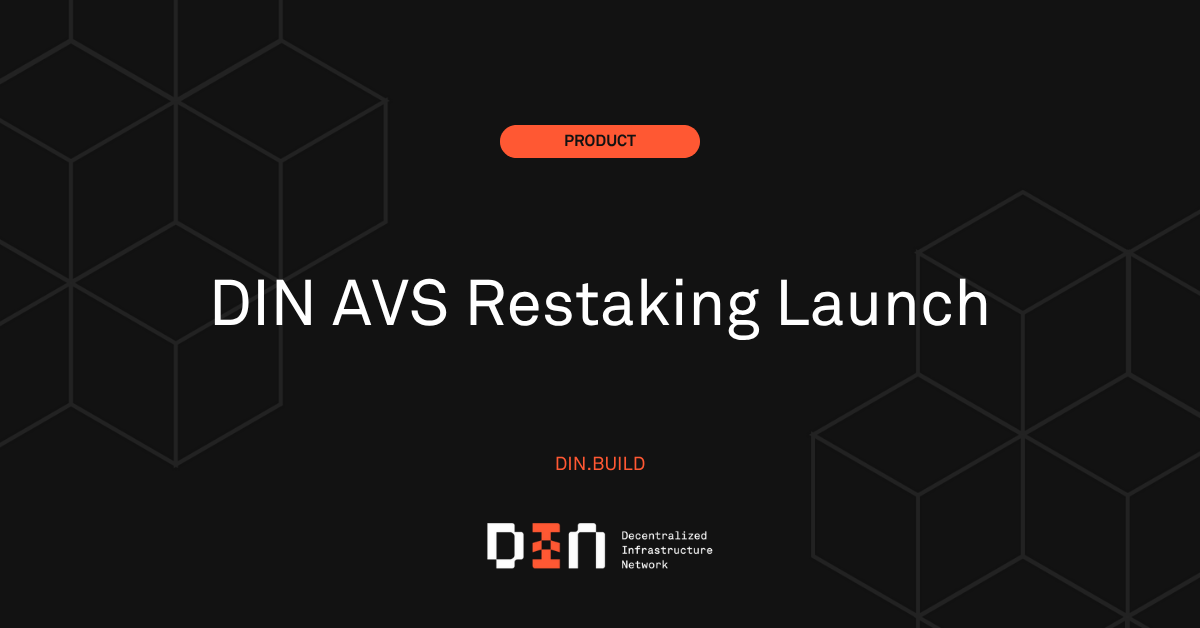DIN AVS Restaking Launch
Infura launches DIN AVS: the first large-scale RPC/API marketplace to run as an EigenLayer AVS
DIN can now leverage billions in restaked ETH to secure its decentralized infrastructure, serving 13B+ monthly requests across 30+ networks
FORT WORTH, TX, November 17, 2025 – Decentralized Infrastructure Network (DIN), built by the team behind Infura at Consensys, today announced the launch of its Autonomous Verifiable Service (AVS) mainnet on EigenLayer, scheduled for November 17. This marks the debut of the first large-scale RPC and API marketplace to run as an EigenLayer AVS and a major step toward solving one of web3’s most pressing challenges: the centralization of infrastructure. The DIN AVS will enable permissionless onboarding for RPC node providers, network watchers, and EigenLayer restakers, offering a new way to decentralize and economically secure RPC infrastructure for web3 developers and applications across 30+ networks.
“We set out to build a protocol that would finally align incentives across the infrastructure layer of Web3. With EigenLayer, we were able to deliver on that vision by building on a proven restaking standard backed by the strongest asset in crypto: restaked ETH. DIN’s Eigen AVS turns infrastructure into an open marketplace, where reliability and performance are directly rewarded,” said E.G. Galano, Co-Founder of Infura, an RPC provider developed by Consensys.
“DIN launching on EigenLayer is a major step for crypto infrastructure, because it brings real economic consequences to a part of the stack that’s been too easy to overlook,” said Sreeram Kannan, Founder & CEO of Eigen Labs. “For years, developers relied on a few centralized RPC providers and had to hope they wouldn’t fail, but DIN sets the new standard for accountability by enforcing reliability with real economic consequences.”
Built to Deliver Decentralized, Scalable RPC Access for Web3 Developers
DIN is a decentralized RPC and API network built to serve infrastructure needs for leading web3 applications. Already integrated into MetaMask, Linea and Infura, DIN routes more than 13 billion requests per month across 30+ networks including Ethereum L1, 8 Layer 2s, and 20+ alternative Layer 1s. With DIN, developers can access a reliable, high-speed, and economically verifiable infrastructure layer backed by a growing ecosystem of node operators. By launching as an AVS on EigenLayer, DIN introduces economic restaking, rewards, and slashing mechanisms to its production RPC operations, anchored in ETH and stETH restaking.
Centralized RPC is a Risk to Web3
Despite the promise of decentralization, 70–80% of RPC traffic today still flows through a handful of centralized providers. This creates systemic risk: a single provider outage can cascade across wallets, dapps, bridges, and DeFi protocols. When one of these providers experiences an outage, the implications are tremendous, with millions of users affected in every layer and vertical. This lack of redundancy and economic accountability among RPC providers creates a systemic risk for the web3 ecosystem.
DIN tackles this head-on by creating a competitive, decentralized supply of RPC nodes, and validating their performance through an open network of watchers. Now secured by Ethereum restaking, DIN introduces real economic accountability to RPC reliability.
How DIN AVS Works
By leveraging EigenLayer’s AVS model, DIN allows ETH and EIGEN restakers to back node operators serving RPC requests. Node providers are rewarded for ensuring uptime and accurate data and in time can be slashed for downtime or incorrect responses.
Key features include:
Permissionless onboarding for node operators and restakers
Independent watchers to verify RPC performance and uptime
$stETH (Lido Staked ETH) staking for securing network reliability (additional token strategies including natively staked $ETH and $EIGEN to come)
Operator Set architecture, where restakers choose which networks to secure
Incentivized testnet results showed >99% success rate, median latency under 250ms, and 7B+ monthly requests served during pilot phases.
Why This Matters for Ethereum
DIN AVS is one of the first real-world examples of EigenLayer’s modular restaking model in production. By extending Ethereum’s security guarantees beyond the base layer, DIN illustrates how core web3 infrastructure, like RPC, can be decentralized and economically reinforced through staking and slashing mechanisms. Its launch provides a tangible contrast to traditional web2 SaaS models, and aligns with a growing trend toward on-chain services where reliability and incentives are built into the system itself. DIN AVS is designed to scale with participation from hundreds of operators, each helping to secure RPC traffic through restaking. Over time, the team aims to further align incentives through on-chain mechanisms to support a sustainable, decentralized RPC economy.
Backed by Real Usage and Proven Scale
DIN has been serving production traffic since February 2024, powering endpoints for MetaMask (including Solana support), the MetaMask Developer Dashboard, and third-party gateway Rivet. Founding node providers EverStake, Liquify, NodeFleet, Validation Cloud, and CompareNodes are already contributing node capacity, operational expertise, and performance validation to the AVS mainnet. The network has completed two independent audits, stood up a perpetual testnet, and is now open for wider staking and operator participation following mainnet launch.
Current launch partners include: 0xFury, AltLayer (tech team contracting on delivering the AVS), BlockPi, Chainstack, Compare Nodes (our main Watcher for testing and monitoring), EverStake, InfStones, Liquify, NodeFleet, Nodies, Northwest Nodes, Rivet (tech team contracting advancing the Router), Simply Staking and Validation Cloud.
To learn more about this initiative, and how to participate, please visit https://www.din.build
About Consensys
Consensys is the leading Ethereum software company, building the infrastructure, tools, and protocols that power the world’s largest decentralized ecosystem. Founded in 2014 by Ethereum co-founder Joseph Lubin, Consensys has played a foundational role in Ethereum’s growth, from pioneering products like MetaMask, Linea and Infura to shaping protocol development and staking infrastructure. Today, Consensys continues to lead Ethereum’s evolution through strategic R&D, and direct contributions to network upgrades like the Merge and Pectra. With a global product suite, and deep roots across the ecosystem, Consensys is uniquely positioned to accelerate Ethereum’s role as the trust layer for a new global economy, one that is decentralized, programmable, and open to all. To learn more, visit consensys.io.
About EigenLayer & EigenCloud
EigenCloud is the world’s first verifiable cloud, enabling developers to build applications, AI products, and AI agents that are provably trustworthy. Built on top of the EigenLayer restaking protocol, EigenCloud extends Ethereum’s security across the digital and even physical world, allowing developers to verify any input, event, or computation using cryptoeconomic guarantees. With primitives like EigenAI for verifiable inference, EigenCompute for secure offchain execution, and EigenDA for high-throughput data availability, EigenCloud introduces verifiability-as-a-service to launch a new era of cloud computing. Its services are backed by over $14B in staked assets, with more than 190 Autonomous Verifiable Services (AVSs) in development and 40+ live on mainnet. For more information, visit eigencloud.xyz.


